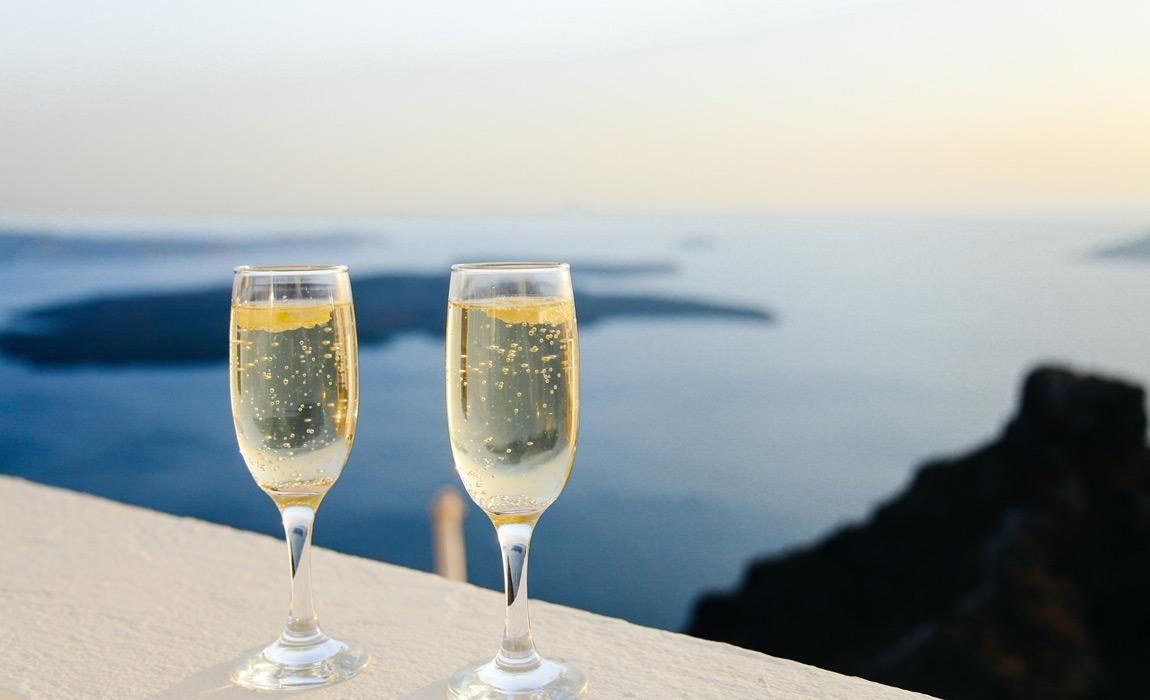A Champagne toast seems to be the icon of welcoming in the New Year or really just celebrating pretty much anything. There is a sort of excitement when you pop open that bottle of bubbly and so it's no wonder that it has been the drink of choice when it comes to a celebration. However, much of what we consider in the United States as "Champagne" is really just "Sparkling Wine" and to complicate things further that's not the only bubbly wine out there for us to enjoy. Let's take a look at some different types of bubbly wines that you can enjoy during your New Years celebration!
Of course, no discussion about wine would be complete without being able to enjoy a bottle or two. Luckily two of our favorite wineries - Chronic Cellars and William Chris offered to help us out with this post!
Champagne
Champagne is sparkling wine made from grapes grown in the Champagne region of France, half way between Paris and Luxembourg. Additionally, there are other rules to ensure consistency and quality such as requiring a secondary fermentation of the wine in the bottle to create the carbonation. Additionally, grapes must be sourced from specific parcels in the Champagne appellation and pressed in specific ways unique to the region.
Grapes used to create Champagne are most commonly Pinot Noir, Pinot Meunier, and Chardonnay but other varietals may be used as well as long is it follows the appellation laws.

Sparkling Wine
Sparkling Wine is essentially Champagne that isn't produced in Champagne. However, because it is free of that geographic limitation it is available in a huge variety of styles.
The earliest records of Champagne being made date back to Benedictine Monks in the Abbey of Saint-Hilaire in 1531 in the South of France. They achieved the carbonation by bottling the wine before the initial fermentation and completed. Over the years other scientists have continued experimenting with the formula, including adding sugar to a finished wine to create a second fermentation. Additionally, English glass-makers had developed innovative processes to construct bottles strong enough to withstand the internal pressures created during secondary fermentation. So, while Champagne is considered iconic "French", without English scientists and glass-makers it might never have become as popular as it is today. In fact, before the new glassmaking process and muselet to prevent the corks from exploding off the top of the bottle, Champagne was referred to as "the devil's wine" because they had a tendency to explode.
Today, the term Champagne is highly protected by the EU and so Sparkling Wine is known under different names in various parts of the world including: Cava in Spain, Asti (Muscat grapes) and Prosecco (Glera grapes) in Italy, and Sekt in Germany. Even in other regions of France, Sparkling Wine is still produced but under different names including Cremant from Burgundy and Alsace.
In the United States, things are a bit more murky though most US producers no longer use the word Champagne. Those who had the approval before 2006 may still use it though and so you'll see Korbel active marketing their product as "California Champagne".
Most sparkling wine sold in the United States follows a similar recipe to French Champagne though, Prosecco is becoming increasingly popular as well.
Our bottle - Spritz and Giggles from Chronic Cellars out of Paso Robles is a blend of Pinot and Chardonnay and refers to itself as a "California Sparkling Wine - Grand Cuvee".

Pet Nat ... Sparkling Wine With a Twist
While the majority of Sparkling Wines sold in the United States rely on a secondary fermentation cycle to create the bubbles, Pet-Nat does things differently. Literally meaning "Naturally Sparkling", the winemaker bottles the wine while it is still fermenting and completes the process in the bottle. This causes the CO2 to be captured in the bottle naturally without having to add extra sugar.
While it goes under a few different names - petillant naturel, methode ancestrale, or col fondo, the biggest clue that this is something different is that it has a crown-style bottle cap on top.
I was first introduced to this style of wine by the folks at William Chris Vineyards - a Texas wine maker. While this is certainly not a new process, it has a feeling that is very much like other "artisanal" efforts today. This is a rediscovery of something good that was lost among the see of crazy expensive Champagne and the cheap bottles of Sparkling Wine. Their 2017 Petillant Naturel Rose features 32.1% Merlot, 22.8% Mourvedre, 20.3% Malbec, 13.4% Malvasia Bianca, 6.6% Grenache, and 4.8% Moscato Giallo - all from High Plains AVA vineyards in Texas.
I love the fact that it's something different and even outside of New Years celebrations, this is an immediate conversation starter so it makes a perfect gift.

No Matter What You Pick, Bubbles in your Wine are Exciting!
However, one common misconception that I see younger guys make is that they assume Sparkling Wine is inferior to Champagne. While you can't deny that the branding of "Champagne" sounds more impressive, there are good Sparkling Wines and there are bad ones. This is true for Champagne too and the confuse things even more, the price of a wine bottle isn't always reflective of its relative quality.
While true Champagne from France tends to be more expensive, it isn't necessarily better tasting. Unless you are in a situation where you need to have something that looks more elite you should grab a fun bottle of Sparkling Wine from a vineyard you love. This will give you something to talk about and share with your guests.
Of course, if you have a particular bottle of Champagne that you genuinely enjoy then by all means go for that ... wine is meant to be enjoyed!
